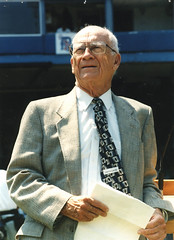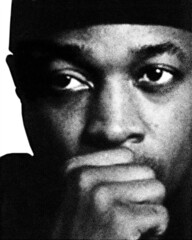Mountaineers
Latest news:
People who try to climb Mt. Everest are absolutely insane...
July 1, we climb into a HUGE Land Cruiser to drive to the base of Mt. Kilimanjaro to do this thing we thought would be fun and cool: climb to the highest point in Africa. We meet our crew: a lead guide, an assistant guide, a cook, a waiter, and 6 porters who will carry all needed stuff. All we carry is a small day-pack and our hiking poles. The team set off ahead of us, as we and our guides begin our leisurely, 4 day uphill walk.
First sight
The path up Mt. Kilimanjaro begins in a rainforest climate. Streams, flowers, huge trees with moss, and monkeys, one of which crossed our path in search of food. .
Wow, this is cool! The first day is basically a three hour uphill walk, not too strenuous. We get to our first camp, which consists of a bunch of small A-frame huts that sleep four, along with a bigger dining hut. It is cloudy, and a light mist is settling upon everything. All in all we feel good, and we are excited about what is to come.
Day two has us set for a six-hour uphill hike, with around 3,300 feet of elevation gain. We begin in the rainforest, with the clouds and fog giving a mysterious sense to everything. We pass these trees that have moss (called "old man's beard") .
hanging off the branches. Shrouded in the fog they have an ethereal pall to them. Slowly as we climb the fog thins, the sky becomes bluer, and the sun becomes more intense. Next thing we know, we are in full daylight, and as we look behind us we are walking above the clouds.
Looking ahead, we get our first view of the peak of Kilimanjaro. Along the path we are passed by our porters Ronald and Bruno. A word about the people who work this mountain: they are friendly, dedicated, and strong as bulls. Each porter carries around 40 lbs. of weight, be it our gear (we certainly couldn't carry it), food, water, propane, whatever. They either carry it across their shoulders, or balanced on their heads, and they smile and laugh while they are doing it, while we suck air just trying to walk on. It is truly amazing. And by the way, they earn around $5 a day for the privilege of humping all of our gear up the mountain, and they laugh and smile the whole time. Their demeanor left a lasting impression on us.
We stop along the way for lunch. It is amazing what they manage to serve to us, considering the circumstances and the fact that everything must be carried by someone. Always a plate of fresh fruit, hot tea or coffee, and on this day a pasta salad with cheese. After lunch we continue upward, until we come to our base for the next two nights, Horombo hut, at around 12,500 ft. Now the air is noticably thin. We will spend two days here in order to acclimate to the thin air. Horombo is like an international way-station. There are people here who are both going up and coming down. Listening, I heard Dutch, German, Spanish, and of course Swahili, along with many intonations of English: Irish, Aussie, Canadian, British, and Tennesseeish. People talk of the thrill of making it to the top, or the disappointment of not being able to, or the excitement of trying. Its a very interesting place.
Our third day of hiking takes us toward the base of the summit. We leave Horombo, which is in what they call a moorland climate, destination Kibo hut. Another six hour uphill climb, with another 1000 meters of elevation gain (taking us to around 16,500 ft) The trail is steeper than you realize, and it becomes a struggle to merely go forward. Now our guides begin to preach "pole! pole!" - slowly, slowly. Just keep putting one foot in front of the other. As we climb we cross from the moorland climate to what is called alpine desert. It is barren, bleak, foreboding. The air is cool but the sun is intense. If the sun goes behind a cloud the temperature seems to drop 20 degrees instantly. You have to make sure to cover your whole body with sunscreen, don't forget the backs of your ears or the tops of your hands. It seems as if we are walking across the moon. The final two hours toward Kibo are tough - we can see the hut, and it seems so close, but it's slow going, and if you try to go faster you are soon out of breath. Finally we make it, around 3:00 pm. We eat quickly, and are in bed by 5:30 - at 11:00 pm they will wake us to begin our trek toward the summit.
When we awake, it is totally dark, and around 30 degrees outside, which only promises to get colder. We prepare: layers of clothing, socks, gloves, hats, waterproof/windproof jacket and pants. As we set out, the sky is filled with more stars than I have ever seen before, and though cold, not uncomfortable. We begin walking and it isn't actually too bad - body heat is generated keeping us warm, and the pace is comfortable. Soon however, the path steepens, a lot. We will gain around 3600 ft in elevation, but that will be over a very small horizontal distance - in fact, the trail is close to 45 degrees in slope. Up we go, pole! pole! Air gets harder to find, the air gets colder. Hands and feet are frozen now. The pace is around one step every two seconds. If you keep in cadence its not bad, but if anything throws you off, like you slip on a rock, you are instantly out of breath and light headed. The path is loose gravel and stone. We keep going, and it becomes a test of will and endurance. At least three or four times I asked myself "what the hell am I doing up here?" and considered turning around. Its difficult to create the mental state people feel, other than to say that it is grueling and demoralizing, and extremely difficult.
As we continue to climb, the air gets colder and thinner. I have no idea how long we have been going, but I keep scanning the horizon to see any hint of the sunrise. I look down at the trail of headlamps winding up the hill below us, and immediately have to brace myself on my poles to fight off vertigo, which again puts me out of breath. Onward and upward, as mental and physical fatigue begin to taunt me. How much longer? I look to the horizon again. Is that a glimmer of sunlight? The path changes to weaving between and climbing up much larger rocks. The large steps up really take the wind out of you, and you have to rest after each step. Yes, that is sunlight, we must be getting close. Our guide expertly leads us around and over these rocks, when all of a sudden he lets out a howl, in swahili. I have no idea what he has said, some incantation to the mountain god, some song of thanks and praise. I barely manage to say, "does this mean we are done going up?" We step over the final, large rocks and down on to the ridge of the crater. We have summitted. I am overjoyed to the point that I want to cry.
We rest for a bit and then carry on, mostly flat, to the actual high point. We see the sun rise, and as it lights the mountain we are surrounded by glaciers. The sunrise is amazing.
and I catch a photo of our guide Charles resting next to one of the glaciers
We get to Uhuru Peak, the high point, take our photos and rejoice.
When we get back to the point where we stepped up onto the crater rim, we look down at what we traversed in the night, and though daylight now, we can barely see where we started from - the hut is a mere speck, way way down the steep slope that we must now descend. I mutter, "get me off this god-damned mountain" and revel in the thought that the only direction left is DOWN.
And to think, Mt. Everest is 10,000 ft. higher than where we went. Yes, those people are insane
















0 Comments:
Post a Comment
<< Home